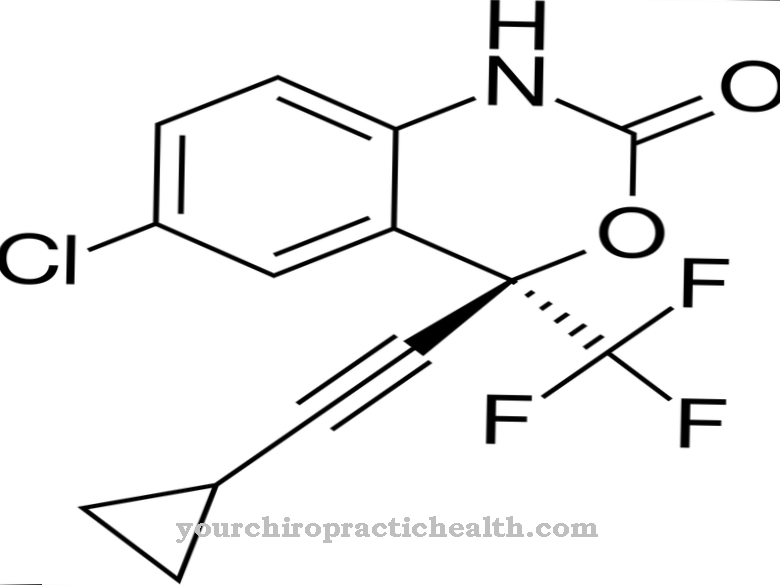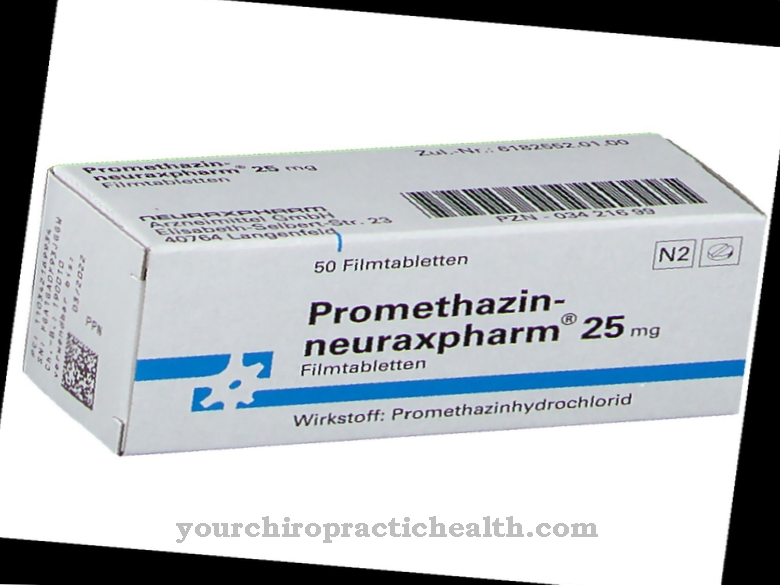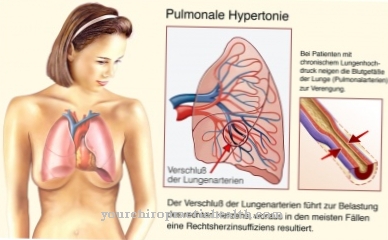From the active ingredient Aleplasinine a drug is currently being developed that will be used in the therapy of Alzheimer's disease. The drug is designed to prevent deposits from building up that cause brain cells to die, making the disease worse.
What is aleplasinine?

Aleplasinin is a selective inhibitor that is said to act on the plasminogen activator inhibitor PAI-1. These are proteins that are contained in the blood and play an important role in blood clotting.
The PAI-1 inhibitor has the task of breaking down the fibrin polymers, which act as a kind of glue during blood clotting, so that they can be broken down in the organism. In rare cases, a PAI-1 deficiency can occur within the human body if there is a mutation in the SERPINE1 gene. The drug PAZ-417 is currently being developed from the active ingredient by the US pharmaceutical company Wyeth.
This company also has a location in Germany where medical research is a major focus. Once the drug has been tested and approved for sale, it will be used in the treatment of Alzheimer's disease.
Pharmacological effect
In patients who suffer from Alzheimer's disease, so-called senile plaques accumulate on the neurons in the gray matter of the brain. These plaques are incorrectly folded amino acids and protein structures that accumulate in nerve cells. These accumulations ultimately lead to the death of the affected nerve cells.
These are mainly the peptides beta-amyloid, which are continuously produced in a healthy organism, but are usually not deposited. Recent research has shown that these peptides play a key role in the processing of information in the brain. Normally, the beta-amyloid peptide activates the plasminogen activator, which in turn activates other enzymes that eventually break down the beta-amyloid peptide again.
In patients suffering from Alzheimer's disease, this mechanism is massively destroyed. Aleplasinin corrects this malfunction insofar as the PAI-1 is inhibited and an increased breakdown of the beta-amyloid peptide can take place. Because this prevents the peptides from being deposited in the gray matter of the brain, the death of nerve cells in the affected regions is prevented.
Medical application & use
The active ingredient aleplasinin is said to be used in the therapy of Alzheimer's disease. This disease belongs to the group of neurodegenerative diseases that occurs mainly in patients who have passed the age of 65. Alzheimer's disease is the cause of around 60 percent of all dementias, which affect around 24 million people worldwide.
Alzheimer's disease is called primary dementia because a change in the structure of the brain can be identified as the cause of the disease. In secondary dementia, the disease has other causes such as deficiency symptoms, poisoning or injuries. While secondary dementia can at least partially be cured, Alzheimer's dementia is considered irreversible. The typical characteristic of Alzheimer's disease is a marked and increasing deterioration in cognitive abilities.
In addition, those affected often no longer manage to cope with their everyday lives. The plaques that aleplasinin is supposed to remove often form years before the first symptoms of Alzheimer's disease become apparent. Because the more advanced Alzheimer's disease is, the more difficult the treatment is, the US National Institute on Aging has defined seven warning signs that can give an indication of an illness, which those affected or their immediate environment should have a doctor examine.
The following warning signs indicate a possible illness: The person concerned repeats the same question over and over again or tells the same story over and over again. Those affected can no longer do everyday chores such as cooking or operating appliances and can no longer handle money safely. The person concerned can no longer find numerous objects or puts them in unfamiliar places, whereupon he suspects other people of having taken the object away. The exterior is neglected, which those affected deny. And: Sick people answer questions by repeating the question.
You can find your medication here
➔ Medicines against memory disorders and forgetfulnessRisks & side effects
Because the active ingredient is still in the development phase, no side effects are known yet.












.jpg)



.jpg)










.jpg)
